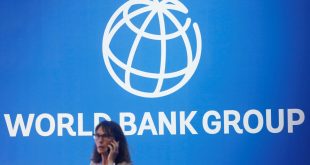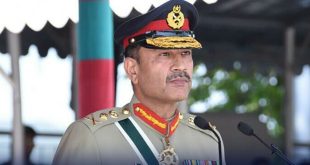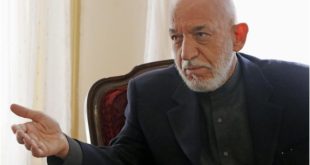The changing dimension of development and the international movement for the development of women have created a policy perspective for gender equality which recognises both women’s and men’s needs and, most importantly, their healthy interactions. Against this backdrop of situation, Dreze and Sen viewed that gender equality and social justice are the urgent need not merely because of the fact that it is an ‘issue’ of the day. Rather, ‘the emancipation of women is an integral part of social progress, not just a women’s issue’.The movement started earlier has called upon worldwide countries and international development agencies to adopt measures for integrating women into the development process which received a major breakthrough in 1970s.
New context and emphasis
The new policy perspective was promoted further by the publication of Easter Boserup’s book, Women’s Role in Economic Development in 1970 which demonstrated that development processes have been strongly male–biased and bypassed women led the international aid community to attempt to integrate women into the production system so that the economy could grow more vigorously. The book not only ignited a worldwide discussion on the need of women’s participation but also seriously challenged the argument that benefits from development projects would automatically ‘trickle down’ to women and other disadvantaged groups in Third World nations. By the time, perhaps, being influenced from the new concept a new approach ‘Women in Development’ (WID) was coined which was based on the philosophy that women are lagging behind in society and the gap between men and women can be bridged by remedial measures within the existing structure. In 1975 the First World Conference on Women held in Mexico brought about the issue in the forefront. As a result, the United Nations declared in the mid–seventies the ‘United Nations Decade for Women (1976-85). It followed in 1977 the introduction of its first guidelines on WID. In 1986, the Women in Development issue became one of the four priority issues of UNDP and thereby, the Division of Women in Development (DWID) had been created in the next year (1987). In 1992, the DWID has been renamed as the ‘Gender in Development Programme’ (GIDP). In the 1990s, the UNDP’s new development discourse and its focus on ‘equity’ and empowerment created a new dimension in terms of women’s development approach.
About gender and development approach
Gradually the world opinion and institutions as well responded in favour of gender equality and, in line in the late 1980s the concept of Women in Development was shifted to Gender and Development Approach (GAD). The new approach is based on two perspectives: Firstly it argues that women’s status in society is deeply affected by their material conditions of life and by their position in the national, regional, and global economies; Secondly, it recognises the fact that women are deeply affected by the nature of patriarchal power in their societies at the national, community and household levels. It advocates for basic intervention with the analysis of men’s and women’s roles and needs, in an effort to empower women, to improve their position in relative to men in ways which will benefit and transform society as a whole. In the GAD two policy approaches – the Practical Gender Needs (PGN) and the Strategic Gender Needs (SGN). Practical gender needs relate to women’s daily needs in caring for themselves and their children, whereas strategic gender interests relate to the task of changing gender relations and challenging women’s subordinate position.This new approach, GAD focuses on the interconnection of gender, class and race and the social construction of their defining characteristics. It recognises the differential impact of development policies and practices on women and men and sees women as agents, not simply as recipient, of development.
Within this context, meaning and perspective, the UNDP in the decade 1990s, introduced agenda for fruitfully incorporating the various development approaches. Its new development discourse and focus on ‘equity’ and ‘empowerment’ created a fresh dimension in terms of women’s development approach. The earlier paper prepared by the GIDP named ‘Gender and Sustainable Human Development: Policy Perspectives (1995); now ‘gender equality and equity’ is put forward as the essence of the programme and the operation of UNDP.The contents of the paper also justifies women in terms of the goals of equality and empowerment. Women’s empowerment is central to human development. Human development, as a process of enlarging people’s choices, cannot occur when the choices of half of humanity are restricted. Targeted actions aimed at empowering women and righting gender inequalities in the social and economic sphere, as well as in terms of civil and political rights, must be taken alongside efforts to engender the development process.
Latest developments
At large, the perspectives of global policy have enabled the developing countries to identify the underlying causes of gender inequality. And, these have helped to develop a more desirable strategic approach, which has made it clear that ‘Gender Equality’ and ‘Sustainable Human Development’ are intertwined. Also, it has recovered a new sense of reality that girls and women should have opportunities for personal growth, security, realisation of rights, control of fertility and health, literacy and opportunities to participate in political and economic system.In tune with this international movement, there has been a profound change in the status of women. The gender gap is narrowing down and women are entering in the production system, thus breaking the barriers of social moulds.
Other developing countries alike, India, perhaps the most complex democracies in the world, has a history of commitment, since the beginning of 1970s, to women’s welfare and empowerment through constitutional provisions, legislations, policy and plans even while at deep levels structural gender biases persist within families, communities, economies and politics. Women still don’t occupy a space as equal members and citizens in India and in other liberal democratic countries. The Government of India’s II and III periodic Report on the Convention on the Elimination of All Forms of Discriminations against Women (CEDAW) 1997-2005 stated that the underlying causes of gender inequality are related to social and economic structures that are based on the social norms and practices. In India, where patriarchy from time immemorial has maintained a strong grip, the realisation of gender equality would not be a fruitful one unless some sort of positive discriminations for women like special social protection is not given.
The writer is Dr.Rajkumar Singh Professor and Head P.G.Department of Political Science BNMU, West Campus P.G.Centre, Saharsa-8Saharsa-852201. Bihar, India.
 Afghanistan Times
Afghanistan Times



